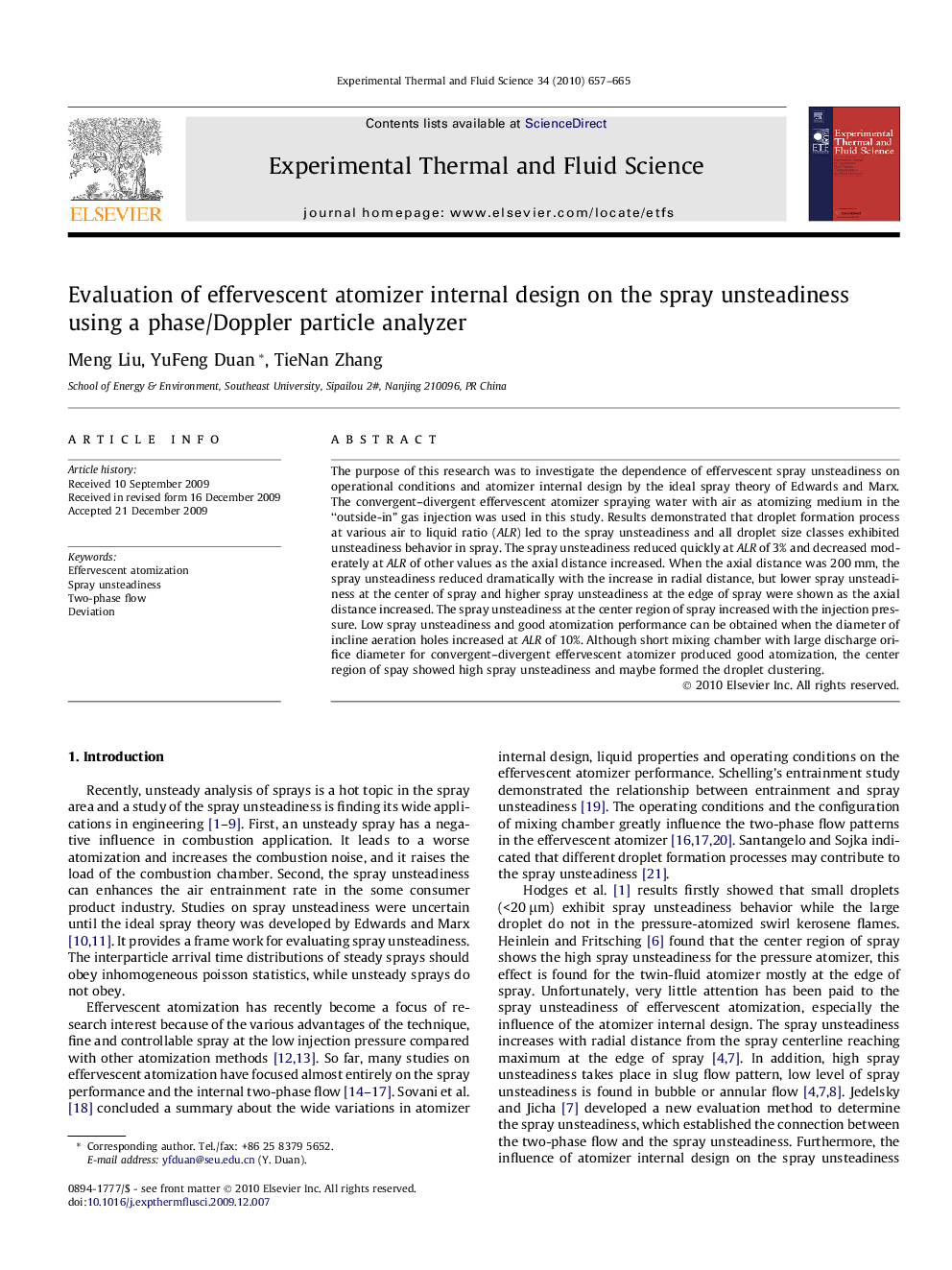| Article ID | Journal | Published Year | Pages | File Type |
|---|---|---|---|---|
| 652077 | Experimental Thermal and Fluid Science | 2010 | 9 Pages |
Abstract
The purpose of this research was to investigate the dependence of effervescent spray unsteadiness on operational conditions and atomizer internal design by the ideal spray theory of Edwards and Marx. The convergent-divergent effervescent atomizer spraying water with air as atomizing medium in the “outside-in” gas injection was used in this study. Results demonstrated that droplet formation process at various air to liquid ratio (ALR) led to the spray unsteadiness and all droplet size classes exhibited unsteadiness behavior in spray. The spray unsteadiness reduced quickly at ALR of 3% and decreased moderately at ALR of other values as the axial distance increased. When the axial distance was 200Â mm, the spray unsteadiness reduced dramatically with the increase in radial distance, but lower spray unsteadiness at the center of spray and higher spray unsteadiness at the edge of spray were shown as the axial distance increased. The spray unsteadiness at the center region of spray increased with the injection pressure. Low spray unsteadiness and good atomization performance can be obtained when the diameter of incline aeration holes increased at ALR of 10%. Although short mixing chamber with large discharge orifice diameter for convergent-divergent effervescent atomizer produced good atomization, the center region of spay showed high spray unsteadiness and maybe formed the droplet clustering.
Related Topics
Physical Sciences and Engineering
Chemical Engineering
Fluid Flow and Transfer Processes
Authors
Meng Liu, YuFeng Duan, TieNan Zhang,
